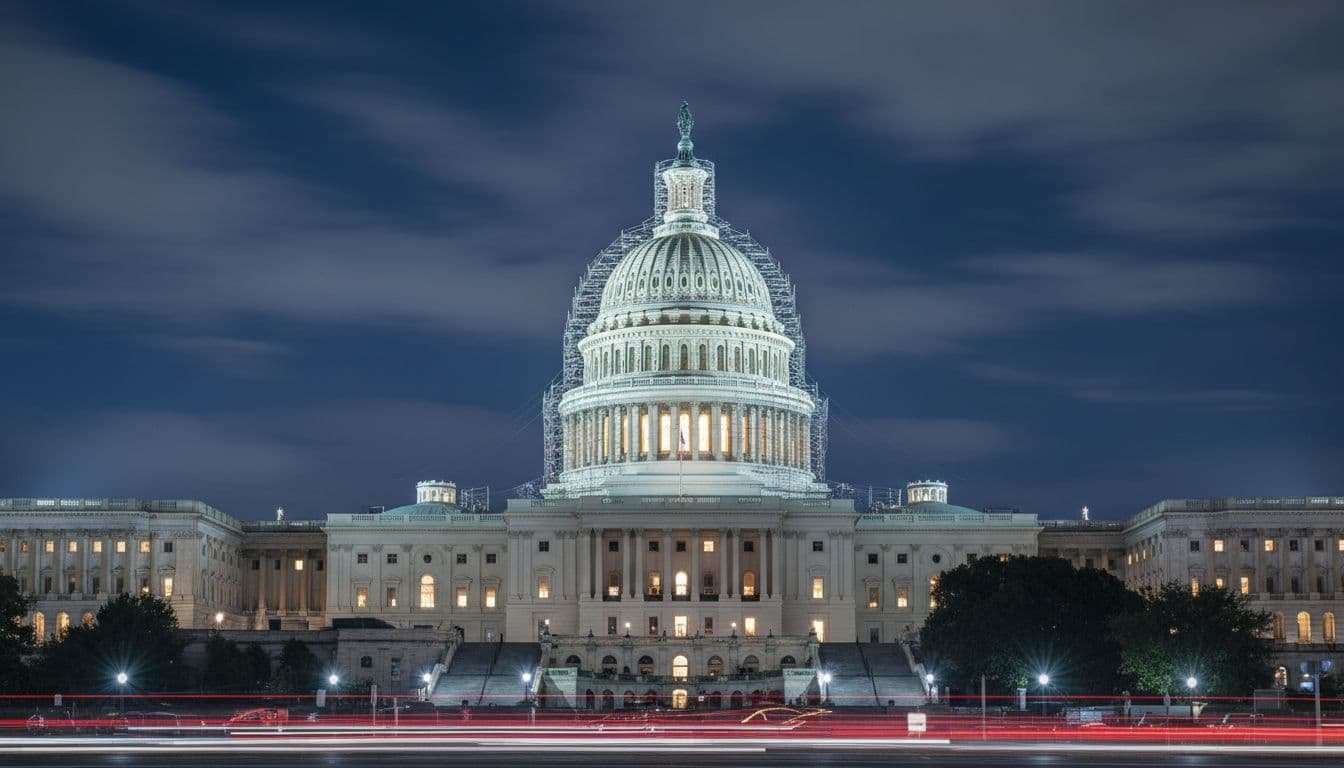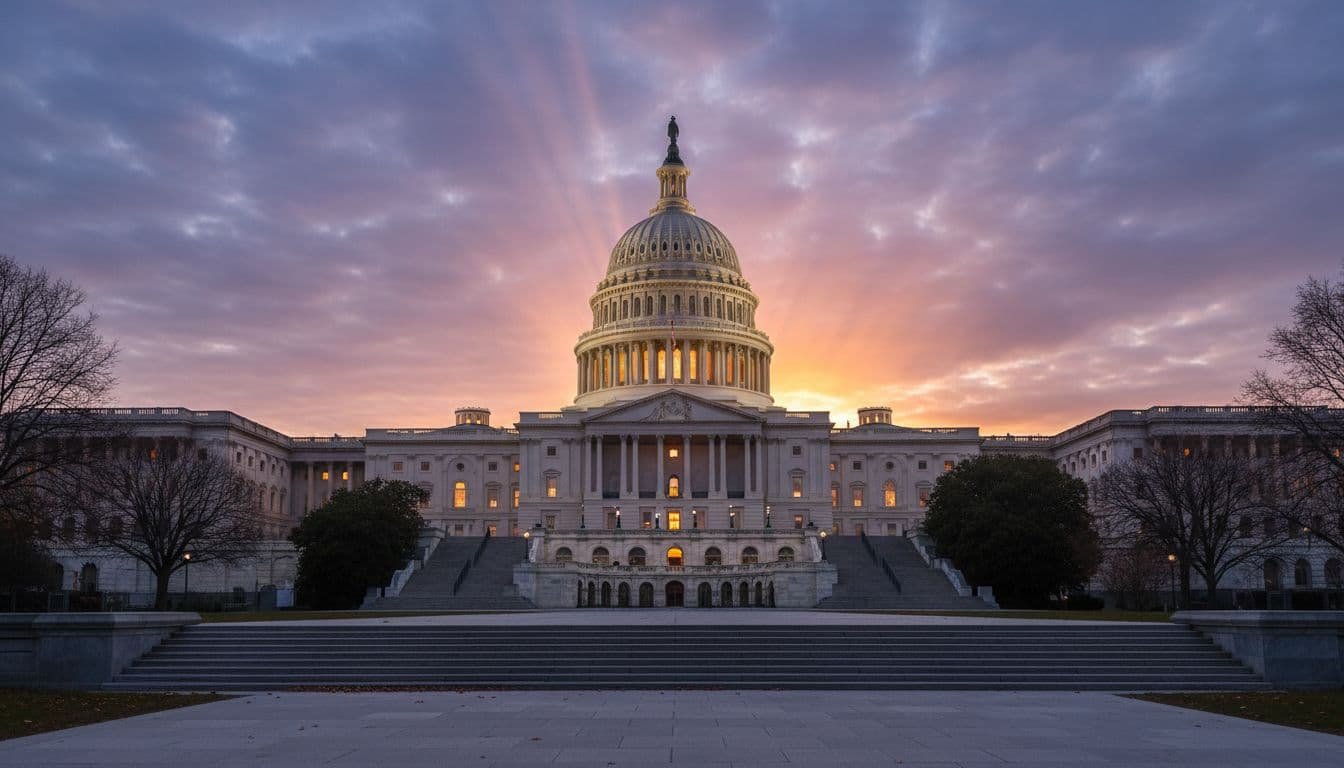Congress is preparing to vote on a stopgap funding plan to end the federal government shutdown. Leaders in both chambers signaled that a vote could arrive within hours, pending final text and whip counts. If it passes, agencies would reopen, workers would return to paid status, and back pay would begin to process.
Here’s a clear look at what’s likely in the bill, the path to passage, and what it means for federal workers, businesses, and the broader economy.
What the vote covers
The measure is expected to be a continuing resolution, or CR. A CR extends current spending levels for a set window, which keeps the government open while lawmakers negotiate full-year appropriations. This plan reportedly includes short-term funding across major agencies and a series of policy riders kept to a minimum to speed passage.
Key details to watch in the text include the length of the extension, any special dates for staggered deadlines, and whether disaster aid or supplemental priorities are wrapped into the package. The shorter the window, the sooner Congress must return to the same fight. A longer window buys time for committees to finish the twelve annual spending bills.

Why the shutdown happened
Shutdowns happen when Congress misses funding deadlines and fails to pass either full-year appropriations or a temporary extension. This standoff combined disagreements over topline spending, policy add-ons, and the sequence of the twelve annual bills. As agencies ran out of authority to spend, nonessential functions paused and workers were furloughed or asked to work without pay until a new law passed.
The immediate damage included delayed services, paused grants, and mounting costs. The longer a shutdown lasts, the more it hits contractors, tourism, small businesses near federal sites, and routine approvals like permits.
What’s likely in the deal
- Short-term funding at current levels for most agencies.
- Deadlines spaced to force steady progress on full-year bills.
- Minimal policy riders to speed the vote.
- Standard back pay for federal employees once the shutdown ends.
Watch for any targeted add-ons, such as disaster recovery dollars or emergency requests. Those can attract bipartisan votes but also spark debate about offsets and oversight.

Path to passage
The House will likely move first, followed by rapid Senate consideration. If leaders agree on the terms, the Senate can use unanimous consent to speed up the clock. If one or two senators object, procedural time can stretch the process by days, but leadership often finds a way around that when a shutdown is already underway.
Whip counts matter. If the bill is clean and short-term, it often draws votes from the center of both parties. The further the bill strays into policy fights, the harder it gets to pass quickly.
Impact on federal workers and services
When the shutdown ends, furloughed workers return and receive back pay according to law. Contractors may not receive back pay unless written into their contracts or covered by separate relief. Expect a surge of catch-up work at agencies, from processing benefits to reopening parks and museums.
Air travel, food inspections, research labs, and passport processing should normalize as staffing returns. Some backlogs remain for days or weeks, depending on how long operations were paused.

What this means for the economy
Short shutdowns usually dent growth but do not derail it. Longer ones compound losses across sectors. Confidence among consumers and small businesses can dip, especially if shutdowns repeat in quick succession. Markets often look past a short CR but react if debt ceiling debates or larger fiscal fights resurface.
Political stakes
Both parties will claim wins. One side frames the deal as responsible governance. The other positions it as holding the line on spending or priorities. The truth is simpler: a CR avoids deeper damage while talks continue. The public tends to punish gridlock if shutdowns become frequent or appear avoidable.
What to watch in the final text
- End date: Does the CR align with committee work or set a new cliff?
- Policy riders: Are there any immigration, energy, or health riders that could snag votes?
- Supplementals: Is aid for disasters, international security, or border operations included?
- Offsets: If new money appears, does the bill pay for it elsewhere?
- Oversight: Are reporting requirements added for transparency?
Timeline after passage
Once both chambers pass the bill and the president signs it, agencies can immediately start reopening. OMB will issue guidance. Departments trigger recall notices and payroll steps for back pay. Committees resume work on full-year bills, and leaders schedule the next funding deadlines.
If the CR uses a staggered schedule, you’ll see pairs of agencies come due on different dates. That approach forces steady work and may reduce the risk of another all-or-nothing cliff.
Congress appears close to ending the shutdown with a short-term funding bill. That would restart services, send workers back with pay, and calm near-term economic worries. It will not settle the bigger spending debate. Expect another round of negotiations before the next deadline arrives.
To contact us click Here .






